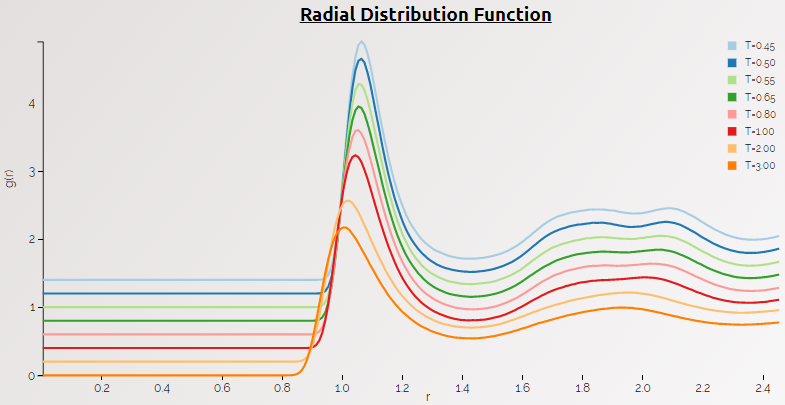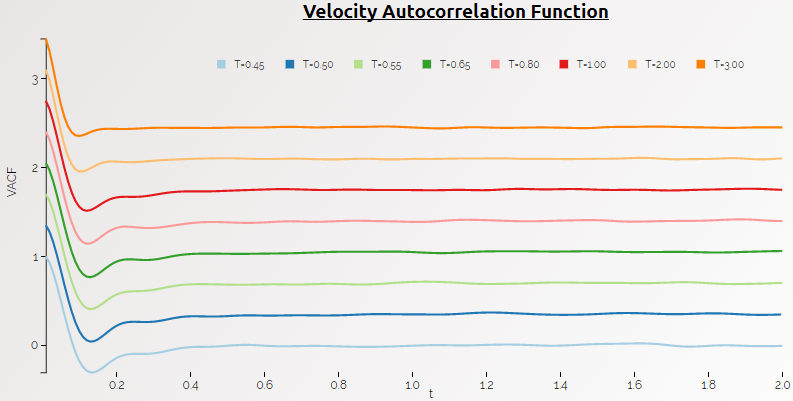Modeling and Simulation
We were able to recreate a molecular dynamics model for finding the equilibrium within a binary Lennard-Jones cluster for specific temperatures. This work was based on a paper by Walter Kob and Hans Andersen for a super-cooled binary Lennard-Jones cluster, where we analyzed the system at higher temperatures, and then decreased them. By using the Velocity Verlet and Gear algorithms, it was easy to see the representation of a super-cooled binary LJ cluster. The goal was to be able to visualize the cluster and verify if physical states have changed, as well as observe any special characteristics within the system. A variety of items were looked at:
- Average Energies
- Pressure
- Mean-Squared Displacement
- Radial Distribution Functions
- Velocity Autocorrelation Functions
- Power Spectra
Because this model represents a binary mixture, i.e. Type A and Type B atoms, multiple visualizations had to be created to ensure all relationships are looked at; that is, A-A, A-B, B-B relationships. Different densities were looked at to see how the behavior of the model was modified. This project extends the work from a paper published in 1994, and another goal along with visualizing the system was to extend the project somehow using a methodology that was not in the presented paper, i.e. the Power Spectra. That additional visual representation was added to the implementation, and there was a clear distinction between the different physical states using that particular methodology.
The graphs presented show when the temperature was at 1.00, we can see that a glass formation occurs (which is presented with a small dent in the radial distribution function at radius 2.0). This is how the model was validated to be working as expected. Posh Informatics is not afraid to enter into uncharted territory, and performs the necessary due diligence to meet and exceed expectations of all clients.


